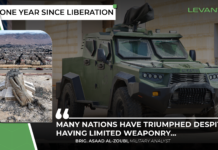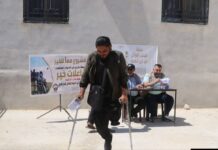
The increase in attacks in greater Idlib by the Assad regime and its allies has raised significant concerns about the nature, targets, and types of attacks in the region. The people of Idlib and the western countryside of Aleppo have been subjected to relentless artillery and missile shelling by the Syrian regime forces and its allied militias, supported by airstrikes from the Russian air force. This continuous situation caused a significant number of casualties and widespread destruction in the region.
Since the start of 2024 in northern Syria, attacks have only increased in several neighborhoods in Idlib and the countryside of Aleppo which have been attacked. Markets, schools, and mosques as well as residential neighborhoods have all been targeted. The toll of casualties due to the shelling by the regime forces has been devastating, with civilian deaths and injuries reported in various locations. The casualties are distributed among different areas, including the city of Darat Izza, and the villages of Bureij Heidar and Kabashin in the western countryside of Aleppo, Sarmin, and Idlib City.
The attacks primarily target civilian areas, resulting in the deaths of civilians, including children, and the injury of many others. One of the recent developments has been the increased use of incendiary weapons by the Assad regime forces. These internationally banned weapons inflict severe burns and widespread damage to crops, property, and infrastructure.
In turn, the Fath al-Mubeen Operations Room (FMOR) responds to the ongoing attacks by targeting regime forces near the front lines and carrying out infiltration operations behind the lines. While the regime primarily attacks civilian targets in towns, villages, and cities, FMOR focuses on military installations on the fronts or inside occupied territory.
The use of incendiary weapons in the attacks has led to severe physical and psychological damage, causing immediate and lifelong human suffering, in addition to the destruction of homes and other civilian infrastructure. Incendiary weapons cause severe burns, damage the respiratory system, and lead to infections, shock, and organ damage. The long-term implications of these attacks include both physical and psychological harm.
International humanitarian law requires the protection of civilians and civilian objects by prohibiting the use of incendiary weapons designed to start fires and airdropped in heavily populated civilian areas and in forests and agricultural land. Groups like Human Rights Watch (HRW) however call for a complete ban on incendiary weapons, emphasizing that all such weapons cause the same kind of harm regardless of their delivery mechanism.
The escalation of attacks in greater Idlib by the Assad regime and its allies underscores the urgent need for international attention and intervention to protect civilians and alleviate the humanitarian crisis in the region. The deliberate targeting of residential areas, markets, schools, hospitals, and places of worship and the use of inhumane weapons, including incendiary weapons, has resulted in widespread suffering and loss of life.








